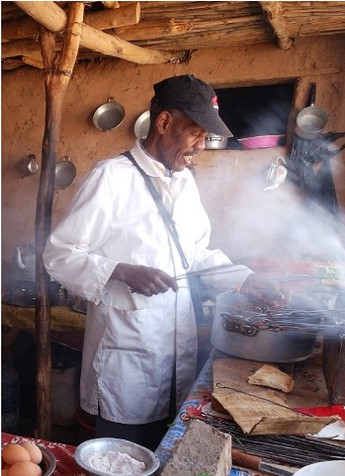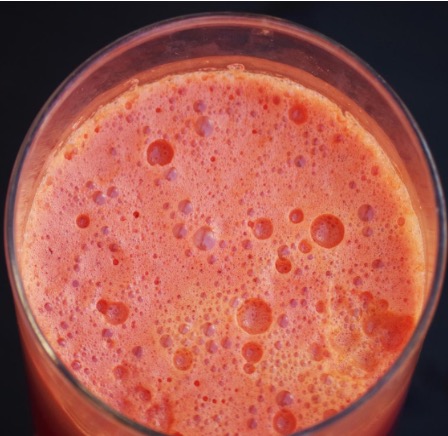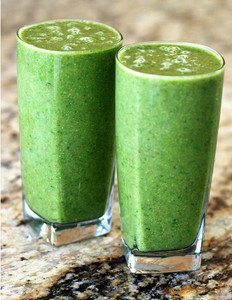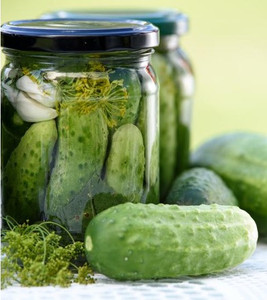Environmental and Health Benefits of Raw Vegetables
Health organizations around the world continuously urge people to eat more vegetables, but studies have shown that not knowing how to cook these essential foods is why many people don’t get enough servings.
Happily, many delicious and nutritiously potent vegetables can be eaten raw—and a new study, published by Frontiers in Nutrition in February 2022, says that the health benefits of eating veggies raw may be even greater than eating them cooked.

The research was led by University of Oxford epidemiologist Dr. Qi Feng using 399,586 UK Biobank participants with twelve years of follow-up. The study states that higher intakes of raw, but not cooked, vegetables were associated with lower cardiovascular disease (CVD) risk, including major CVD events and death.
If you’re also concerned about the health of the environment, eating raw foods can help lower your carbon footprint. Simply put, cooking requires energy and creates greenhouse gas emissions, but preparing raw veggies requires no energy for heating and therefore is more environmentally friendly. The nutritional and environmental benefits are increased by purchasing sustainably and locally grown vegetables.
Cooking consumes energy (left). Buying local saves energy (right). ©Rosino/Flickr/Wikimedia Commons.
©Ji-elle/Wikimedia Commons
The environmental and health benefits of raw vegetables are not easily dismissed. Fortunately, it’s simple to incorporate them into your diet.
What is Raw?
Beyond simply being uncooked, raw veggies can be served in a variety of forms. In an article for Healthline, registered dietitian Taylor Jones wrote, “A food is considered raw if it has never been heated over 104–118°F (40–48°C).” Temperatures below this range help to retain nutrients and allow enzymes to survive. Raw foods can also include alternative preparation methods such as dehydrating, fermenting, juicing, and sprouting.
Comparing the healthfulness of raw and cooked vegetables is complex because it is not entirely understood how all the molecules in plants interact with the body.
To further complicate the issue, vitamins, minerals, antioxidants, polyphenols, enzymes, and fiber in vegetables can be altered differently, both in quantity and quality, via cooking methods. For example, one study showed that boiling carrots increases antioxidant levels (specifically beta-carotene), while another study found that it dramatically reduces vitamin C and leads to a total loss of antioxidant polyphenols that reduce the risk of CVD and cancer. Clearly, food chemistry is laden with intricacies even before the issue of biologic absorption can be digested.
Raw carrot juice (left). Cooked carrot soup (right). ©Ajale/Pixabay. ©Jules/stone soup/Wikimedia Commons
Potential Drawbacks and Solutions
Harmful bacteria, fungi, viruses, and parasites can be introduced to vegetables in the field or in the process of picking, handling, and transport. Therefore, in lieu of cooking, it is essential to properly wash and store raw vegetables. The U.S. Centers for Disease Control and Prevention recommends the following steps for safety:
Wash your hands, kitchen utensils, and food preparation surfaces, including chopping boards and countertops, before and after prep.
Clean produce under cool running water (no solutions or soaps required) before eating or cutting. (Even if you do not plan to eat the peel, germs on the peel can contaminate the food when cutting.)
Cutaway bruised or damaged portions.
Keep produce separate from raw meats.
Refrigerate within two hours and chill at 40°F or colder in a clean container.
Another possible concern is that the high fiber content in raw veggies, which helps maintain a healthy digestive system and may protect against colon cancer, can cause painful gas. This can be remedied in several ways—by slowly adding raw vegetables to your diet so that the digestive system can adjust, eating veggies in small amounts throughout the day, chewing thoroughly to break down food into small particles, eating slowly to prevent swallowing excess air, and drinking extra water.
Finally, some people are simply unable to digest raw cruciferous vegetables such as broccoli, Brussels sprouts, cabbage, cauliflower, and kale because these vegetables contain complex sugars called raffinose. In this case, the best solution is cooking these veggies and getting raw benefits from others.
Certain Veggies Require Cooking
Some plants contain natural toxins or harmful enzymes, and therefore must be cooked before being consumed. When uncertain of the safety of eating a particular vegetable raw, it’s a good idea to consult reliable sources of information. Here is a partial list.
Cassava, also known as manioc or tapioca, is a root vegetable and a staple of South American cuisine. Raw cassava contains cyanogenic glycosides, which become lethal cyanide when chewed. If washed, rinsed, peeled, and cooked, this veggie contains loads of vitamins and minerals.

Lima beans or butter beans also contain cyanogenic glycosides, which protect plants from being munched by animals by releasing cyanide if chewed. When fully cooked, lima beans are nutritious and safe.
While castor oil has long been used for health benefits, the beans themselves can release ricin, an extremely toxic poison. Eating just one or two castor beans can cause the demise of the eater.
Raw red kidney beans may not be lethal, but the toxin phytohemagglutinin can cause severe gastrointestinal discomfort akin to food poisoning. When properly cooked, red kidney beans contain ample protein, fiber, and antioxidants.
Eggplant contains solanine, an alkaloid that can be toxic in large quantities. While you would need to eat a significant amount to die from consuming raw eggplant, any amount could lead to diarrhea, nausea, and vomiting. Cook them up.
Beyond Salad

You could have salads as a side dish or a main dish every day, or you might snack on raw veggies (perhaps with hummus or another dip). But because there are so many delightful raw veggie recipes, it would be a shame to limit yourself to salad.

Shredded cabbage in a sweetened creamy mayonnaise sauce is a common slaw recipe, but you may not be aware that the slaw repertoire is so much more expansive. Slaws can contain a variety of shredded veggies, including broccoli, jicama, radishes, scallions, Brussels sprouts, onions, carrots, summer squash, or beets,and be adorned with cheeses, nuts, sprouts, seeds, and all flavors of sauces.
Smoothies are delicious, nutritious, and convenient, and can include veggies, fruits, nuts, and more. A high-powered blender purees veggies such that even finicky eaters can’t detect them. The flavor of spinach disappears behind fruit, carrots hide within citrus, and beets blend perfectly with berries. Try some smoothie recipes and then start experimenting.
Green smoothies (left) and espresso smoothie (right). ©NatureFriend/Pixabay. ©Annafood/Pixabay
Refrigerator pickling is another simple process that takes vegetables (beyond cucumbers) to another level. Excellent dill, spicy, or sweet pickles can be made with green beans, carrots, radishes, onions, mushrooms, cauliflower, okra, green tomatoes, and more.
Dill pickles (left). Japanese pickled celery (right). ©WDnet/Wikimedia Commons. ©Ayustety/Wikimedia
Fermented vegetables are a time-tested method developed in many cultures around the world as a practical way to preserve food without cooking. Fermentation also creates probiotics, the beneficial bacteria that is fantastic for the gut microbiome. Anyone can give fermentation a try with ordinary kitchen tools—a knife, cutting board, mixing bowl, and a jar. One of the easiest fermentations is German sauerkraut, which only requires cabbage and salt! Or give Kimchi a try. South Korea’s national dish is typically spicy and sour and made from salted, fermented cabbage, radishes, or cucumbers. It is full of probiotics, vitamins, and antioxidants, and Koreans believe it can help cure flu viruses and prevent heart disease and diabetes.
Cucumber kimchi (left). German sauerkraut (right).
©Chloe Lim/Wikimedia Commons. ©Dirk Ingo Franke/Wikimedia Commons
There are so many raw veggie dishes from all over the world and so little space to list them all. Gazpacho, a traditional appetizer in Spain, can be a cold soup or vegetable juice. Pico de gallo (salsa fresca from Mexico) bursts with fresh tomato, onion, peppers, cilantro, lime and, frankly, joy. Italian bruschetta, Middle Eastern tahini, Japanese miso, dried herbs for seasoning and teas, nut and seed butters, nut and grain “milks,” and myriad sea vegetables … are you hungry yet?

Raw isn’t a new idea. The Aztecs invented guacamole in the 16th century and fermentation was (accidentally) discovered more than 10,000 years ago in Africa on a hot day (yogurt!). Take a raw trip back in time or take a raw culinary trip around the world or just go eat a salad. No matter how you do raw veggies, your body will thank you.
*Julie Peterson writes on health and environmental issues from the Midwestern United States.




















Opmerkingen